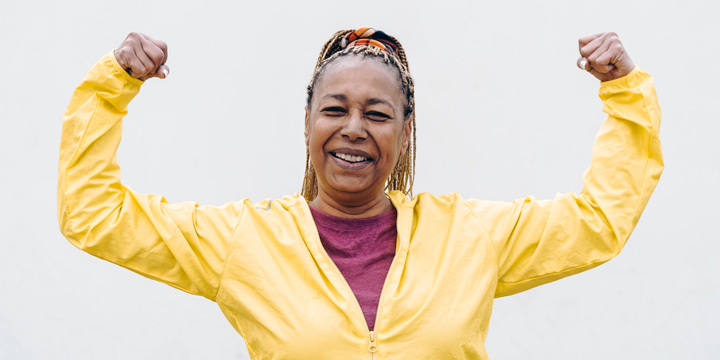
Turning back time to reverse diabetes might sound too good to be true. However, there is increasing evidence that people with type 2 diabetes may be able to do just that.
The term diabetes reversal (sometimes known as “diabetes remission”) is used when people with type 2 diabetes are able to get their A1C below 6% without taking any diabetes medications. However, they still must engage in ongoing lifestyle changes in order to stay off of their meds.
The cornerstones of reversing diabetes are physical activity, weight loss (if needed) and eating a healthy diet.
Get your body moving!
Everyone – whether or not they have diabetes – benefits from regular exercise. Well-known health benefits include weight loss, stronger bones, improved blood pressure control, lower rates of heart disease and cancer, and increased energy levels. For people with diabetes, it’s well known that increased physical activity can result in better blood glucose levels.
Lose that extra weight!
A weight loss of 5% to 10% of your initial body weight can substantially improve your diabetes control, and reduce the risk of complications such high blood pressure and high cholesterol. That means, if you weigh, say, 90 kilograms (200 pounds) and lose five to 10 kilograms (10 to 20 pounds), your risk of diabetes complications is greatly reduced.
Eat healthily!
A healthy meal plan is crucial to helping you manage your diabetes, and ensuring that your blood glucose levels are controlled. General tips for healthy eating that can assist in glucose control include:
- Eating three meals per day at regular times, and spacing meals no more than six hours apart. This will improve your general well-being and your energy levels, and also help you maintain or lose weight. Eating at regular times also helps your body control blood glucose levels.
- Limiting sugars and sweets (for example, regular pop, desserts, candies and jam). The more sugar you eat, the higher your blood glucose will be. As well, foods and drinks that contain high amounts of sugar (and no fibre) cause a rapid increase in blood glucose levels.
- Limiting intake of high-fat foods, as they can cause weight gain.
- Eating high-fibre foods (such as whole grain breads and cereals, lentils and beans, brown rice, vegetables and fruits. Foods that are high in fibre help you feel full and control your appetite, and may lower blood glucose and cholesterol levels.
The evidence that you may be able to reverse diabetes
A number of studies have shown that dietary alterations, increased physical activity and adherence to medication therapy can significantly lower blood glucose levels.
Researchers at McMaster University in Hamilton, Ontario, studied 83 people who had type 2 diabetes for less than three years. All participants followed personalized exercise routines, reduced their food intake by 500 to 750 calories per day, were treated with oral diabetes drugs (metformin and acarbose) and insulin, and met regularly with a nurse and dietitian. One group of participants followed this intensive routine for eight weeks, while a second group did it for 16 weeks. A third “control” group followed standard advice about blood sugar management and lifestyle routines from their usual healthcare provider.
At the end of the study, 50% of the eight-week participants and 70% of the 16-week participants had normal blood sugar levels and had stopped taking diabetes medication, compared with less than 4% of the control group. Three months later, 40% of participants in the two “intensive routine” groups still had normal blood sugar levels and were considered to have reversed their diabetes.
Researchers at the University of Alabama at Birmingham studied the effects of diabetes reversal through weight loss in 5,145 people with type 2 diabetes. The study participants were placed into two groups: the first group reduced their total caloric intake to between 1,200 and 1,800 calories per day and exercised for up to 175 minutes per week. They also received group and individual counselling on an ongoing basis. The second group received group counselling once per year, which focused on diet, physical activity and social support.
After one year, 12% of participants in the first group experienced diabetes remission, compared with 2% in the second group. In both groups, remission of diabetes was more common in participants who had larger weight losses or greater improvements in fitness.
Is the effect of diabetes reversal lasting?
It’s important to keep in mind that type 2 diabetes is described as a “progressive disease.” That means that, ultimately, your pancreas may not function as well as a person without diabetes, even when you have a healthy diet plan and exercise regularly. The good news, however, is that the longer you remain in a “reversed” state, the longer you can delay or even prevent the need for diabetes medications, and avoid complications of the disease.


